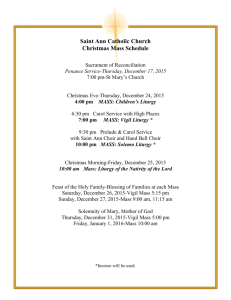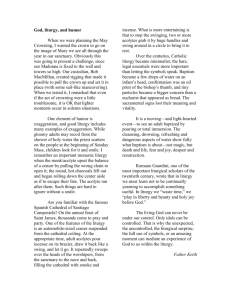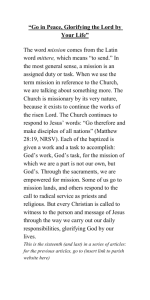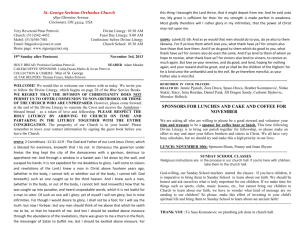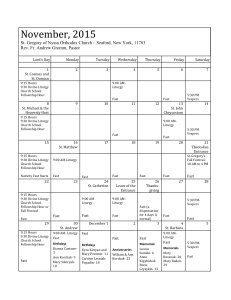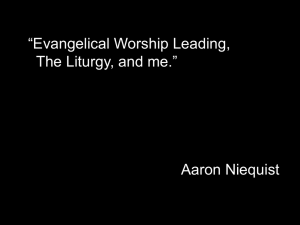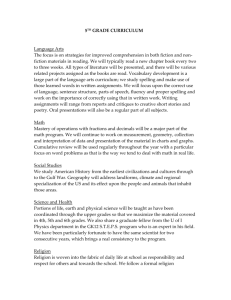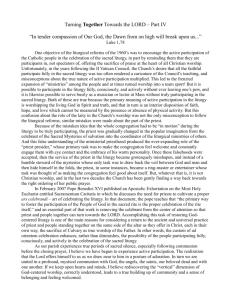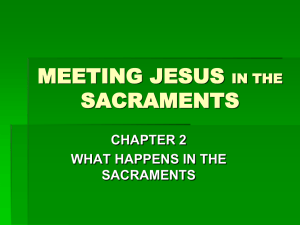How is the liturgy celebrated
advertisement
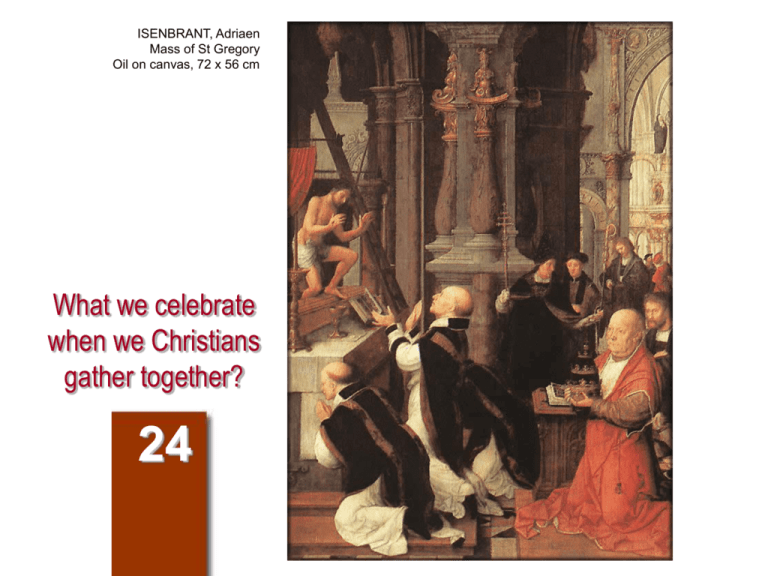
ISENBRANT, Adriaen Mass of St Gregory Oil on canvas, 72 x 56 cm What we celebrate when we Christians gather together? 24 Compendium of the Catechism 218. What is the liturgy? 1066-1070 The liturgy is the celebration of the mystery of Christ and in particular his paschal mystery. Through the exercise of the priestly office of Jesus Christ the liturgy manifests in signs and brings about the sanctification of humankind. The public worship which is due to God is offered by the Mystical Body of Christ, that is, by its head and by its members. Introduction The mystery of Christ; this alone is what the liturgy announces and celebrates. Christ lives and acts in the Church through the sacraments. These apply the merits of the Redemption to humanity, thus continuing the saving work that Jesus carried out in the world. He who wishes to live the life of God must participate in the liturgy of the Church. The liturgy celebrates the mysteries of our salvation, in union with Christ and inspired by the Holy Spirit, thereby rendering to God the Father the homage of adoration, praise and thanksgiving that He expects from His children. Main ideas 1. What is the liturgy of the Church? The liturgy is the work by which Christ –through physical signs and symbols glorifies the Father in the unity of the Spirit and saves mankind, acts in the Church as the invisible Head through His ministers, in order to perpetuate the work of redemption in the world. POUSSIN, Nicolas The Seven Sacraments: Confirmation 1645 Oil on canvas, 117 x 178 cm National Gallery of Scotland, Edinburgh In the liturgy, the Church gives public worship to God. The liturgy is a participation in the prayer of Christ and a fountain of life which flows from the Saviour of the world. 2. The liturgy, work of the Holy Trinity The three divine Persons intervene in the liturgy. God the Father is worshipped and praised as the source of blessings for creation and for salvation; Christ –the eternal high priest– shows forth the glory of God and brings about the salvation of mankind through the sacraments; the Holy Spirit –as the soul of the Church– invigorates and enlivens the work of God in order to bring it to perfection. COECKE VAN AELST, Pieter Holy Trinity Oil on panel, 98 x 84 cm Museo del Prado, Madrid 3. The sacraments of the Church The Church’s liturgical life hinges on the seven sacraments : CODAZZI, Viviano St Peter's, Rome c. 1630 Oil on canvas, 168 x 220 cm Museo del Prado, Madrid Baptism Confirmation Eucharist Penance Anointing of the sick Holy Orders Matrimony 4. The celebration of the Church’s sacraments Although there are different traditions within the single Church of Christ, there are some common elements in the liturgical celebrations : a) Who celebrates? The liturgy is the work of the whole Christ, Head and Body. b) How is the liturgy celebrated? The liturgical celebration is woven from signs and symbols. c) When is the liturgy celebrated? Sunday, the day of the Lord, is the principal day for the celebration of the Eucharist. d) Where is the liturgy celebrated? the Church needs places where the community can assemble: these are our churches. WEYDEN, Rogier van der Seven Sacraments Altarpiece (detail) 1445-50 Oil on oak panel Koninklijk Museum voor Schone Kunsten, Antwerp 5. We must participate actively in the liturgy of the Church Our mother the Church asks us to attend the celebrations in a conscious way (being aware of what we are doing), actively (taking part in the various ceremonies) and fruitfully (being well prepared to make the most of the celebration). Resolutions for Christian life Resolutions to move forward Always attend with devotion any liturgical celebration of the Church, and especially the Holy Mass. Make frequent visits to the nearest church or temple, which is invariably a privileged place for an encounter with God and for prayer.

